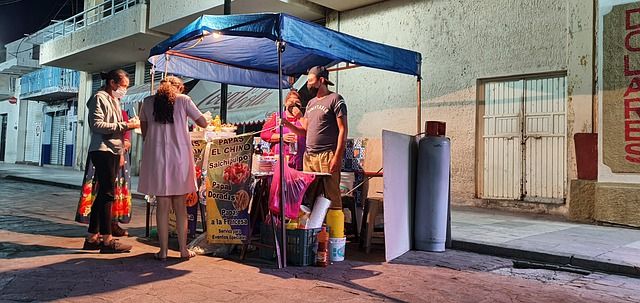Informal labor in Mexico is on the rise
During the period from April to June of this year, more than 31 million workers were working informally in Mexico.

According to INEGI's National Occupation and Employment Survey (ENOEN), during the second quarter of 2020, 44.7 million people were reported to be employed, a figure that rose to 55.2 million in the same period but in 2021; however, although employment rates increased considerably in the country during the pandemic, many of them were within informality, which means that most of them register low wages and there is no access to benefits, health insurance, among other things.
According to the figures, the number of informal workers increased from 22.8 million to 31 million from 2020 to 2021, so, the employed population in this sector increased 8.2 million, which means 78 percent of the total employment increase in the period. It was also reported that of the 10.5 million people employed between 2020 and 2021, 66 percent were with salaries of up to two minimum wages, of which 82 percent are in jobs that do not allow them to have access to health institutions and other services of this type.
Of the 15.8 million people employed in informal activities, 7.3 million work either in a company or in the government, 5.9 million are in agriculture and 2 million perform paid domestic work.
The numbers reflected in Mexican families
The report of the collective Mexico How are we doing? (MCV) showed that working poverty, i.e. those families in which the income is insufficient to buy the basic food basket for all members of a household, continues its downward trend by registering 38.5 percent of the population, this before the arrival of the pandemic.
The only states that showed improvements in their working poverty level with respect to the first quarter of 2020 were Chiapas, Zacatecas, Nayarit, Colima, SLP, Hidalgo, Campeche, Tamaulipas and Veracruz. Two thirds of the states -23 remaining states- showed an increase in the in-work poverty levels of their population.
Working poverty disproportionately affects women. For every 100 men in working poverty in Mexico, there are 111 women in this situation. This ratio is slightly better than that recorded in the previous quarter, where there were almost 120 women for every 100 men in working poverty.
Nuevo León is the state with the second lowest percentage of people in working poverty and the highest social welfare, but it has the widest gap between men and women: for every 100 men in working poverty, there are 124 women.




